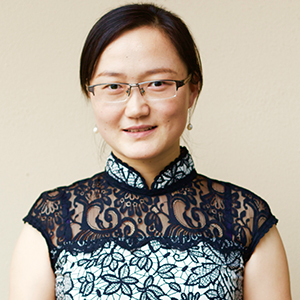Sichuan Travel Guide
Brief history of Sichuan
Sichuan is a province in southwest China that has a rich and diverse history. Here is a brief overview of some of the key events and periods that have shaped the history of Sichuan:
Prehistory and early history: Archaeological evidence suggests that humans have lived in the Sichuan region for at least 4,000 years. The area was part of several ancient states, including the Ba and Shu kingdoms, which were conquered by the Qin dynasty in the third century BCE.
Imperial China: During the Han dynasty (206 BCE - 220 CE), Sichuan was an important center of agriculture and commerce. The province also played a role in the rebellion against the Tang dynasty in the 8th century CE, which resulted in the establishment of the short-lived state of Chengdu.
Ming and Qing dynasties: During the Ming and Qing dynasties (1368-1912), Sichuan was a center of trade and culture, and it became known for its tea, silk, and porcelain. The region also played a key role in the anti-Manchu rebellion led by Zhang Xianzhong in the 17th century.
20th century: Sichuan was a center of political and social upheaval during the 20th century. It was the site of the Sichuan-Xikang Soviet, a communist stronghold established in the 1930s, and it was heavily bombed by the Japanese during World War II. After the communist revolution in 1949, Sichuan became an important center of industry and agriculture, and it was the site of several key infrastructure projects, such as the Three Gorges Dam.
Recent history: In recent years, Sichuan has experienced rapid economic growth and modernization. The province is now a center of high-tech industries, such as electronics and aerospace, and it is also a popular tourist destination due to its natural beauty and cultural attractions.
Attractions
Sichuan is a province in southwestern China with a diverse range of attractions including stunning natural scenery such as Mount Emei and Jiuzhaigou Valley, cultural and historical sites like the Leshan Giant Buddha and the Wuhou Temple, and unique experiences such as visiting the Chengdu Research Base of Giant Panda Breeding and enjoying the spicy Sichuan cuisine.
Activities
Sichuan renowned for its diverse and vibrant cultural heritage, offers a wide range of captivating and interactive hands-on activities, including Sichuan Opera face-changing, bamboo weaving, clay figurine making, embroidery, paper-cutting, and tea-making, among others, providing visitors with a unique opportunity to immerse themselves in the local culture and learn about the traditional arts and crafts that have been passed down for generations.
Interesting Sichuan activities >>
Top things to do in Sichuan
A trip to Sichuan, would not be complete without experiencing the stunning natural beauty of Jiuzhaigou Valley and Huanglong Scenic Area, trying the famous spicy Sichuan cuisine, visiting the world's largest Buddha statue at Leshan Giant Buddha, exploring the historical and cultural sites of Chengdu including the Wuhou Shrine and Jinli Old Street, and witnessing the adorable giant pandas at the Chengdu Research Base of Giant Panda Breeding.
More about thigns to do in Sichuan >>
Weather
The best time to visit Sichuan is during the spring (March to May) and autumn (September to November) when the weather is mild and comfortable, and the scenery is beautiful with blooming flowers or colorful autumn leaves, respectively; however, summer (June to August) can also be a great time to visit, especially for outdoor activities, but be prepared for some occasional rain and hot temperatures.
Winter (December to February) is usually cold and dry, but it can be an ideal time to experience the hot springs and winter sports in places like Emei Mountain and Jiuzhaigou Valley.
Sichuan's weather can be unpredictable, and visitors should check the forecast and prepare accordingly.
Sichuan weather, when to visit Sichuan >>
Travel itinerary
A well-rounded travel itinerary for Sichuan could include exploring the vibrant city of Chengdu with its iconic pandas and spicy cuisine, immersing oneself in the Tibetan culture of the Kham region with visits to historic monasteries and stunning natural landscapes such as Jiuzhaigou Valley and Mount Siguniang, and experiencing the unique charm of the ancient town of Leshan with its massive stone-carved Buddha statue and scenic river views.
Travel itineraries for Sichuan, highlights, hiking, birding, etc. >>
GREAT FAMILY CHINA TOUR
JULY 2024 We wanted to thank Grace at China Culture tour for organizing a great tour of China. We enjoyed our Beijing - Xian-Chengdu -Guilin -Yangshuo - Shanghai trip. Our local guides Bruce in Beijing, Susan in Xian, Jane in Chengdu, Mike in Guilin and Mary in Shanghai took care of us…read more details »
Teng Han L from SINGAPORE
Ready to Create a Unique Dream Travel?
